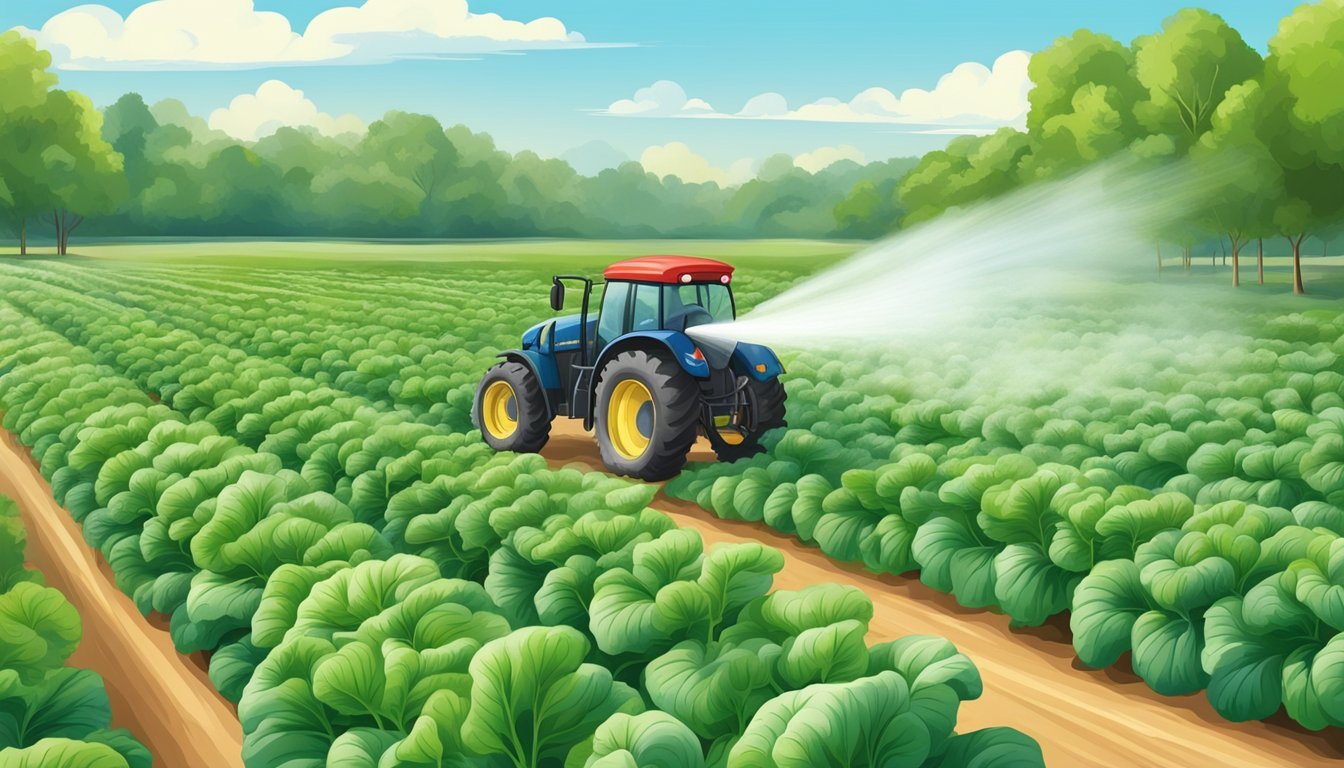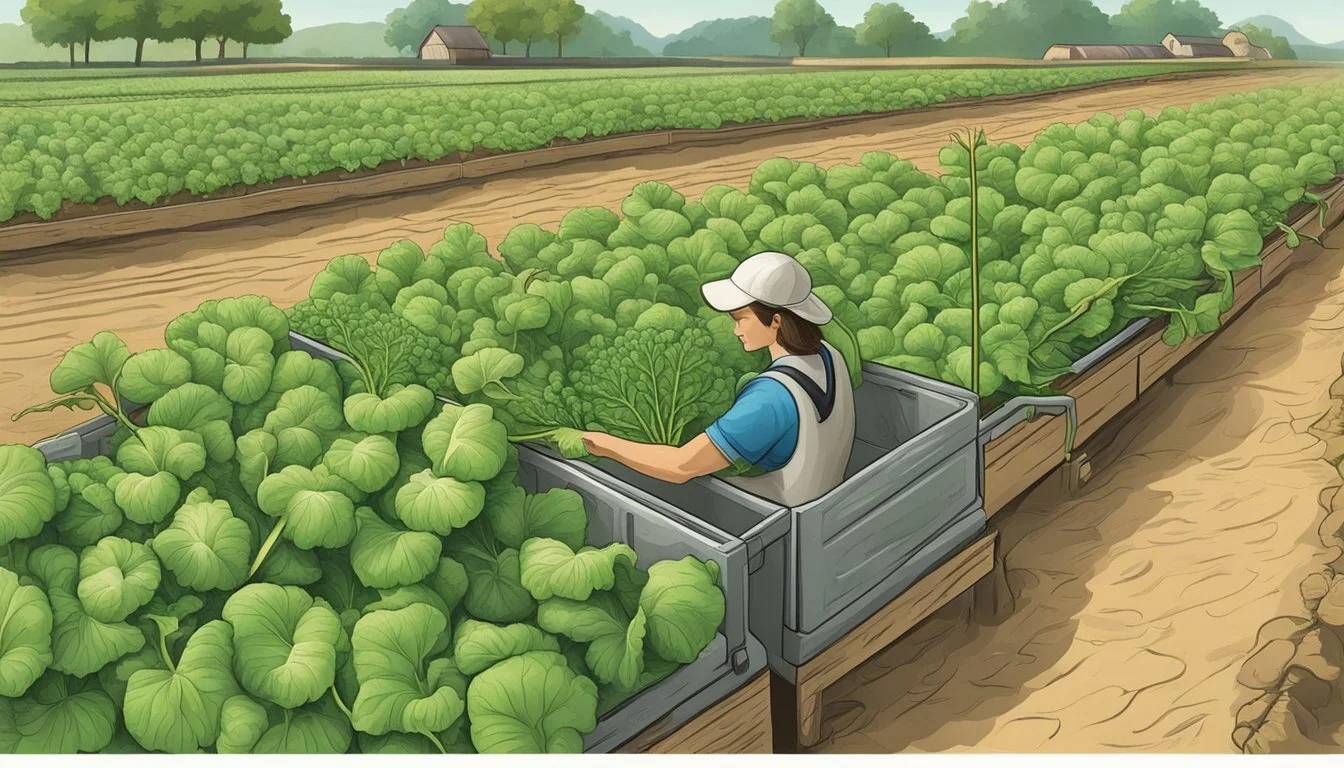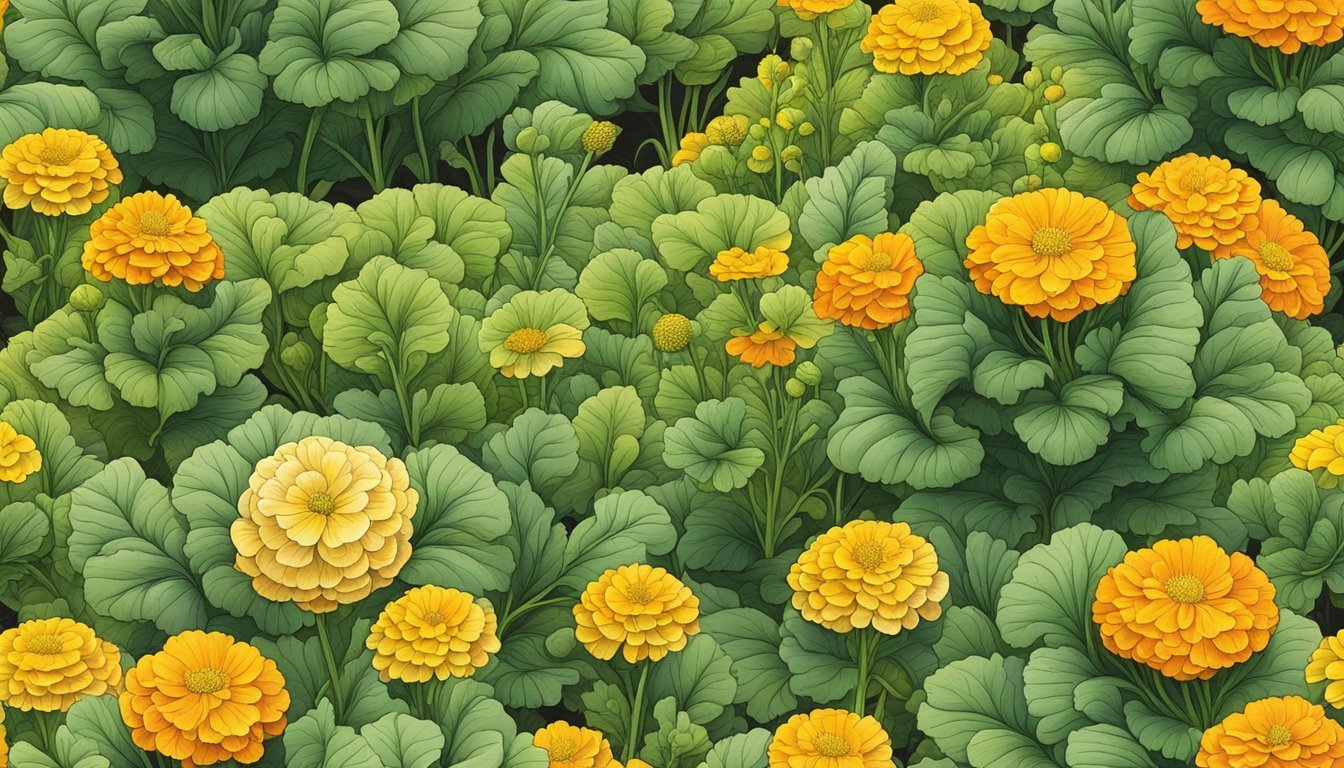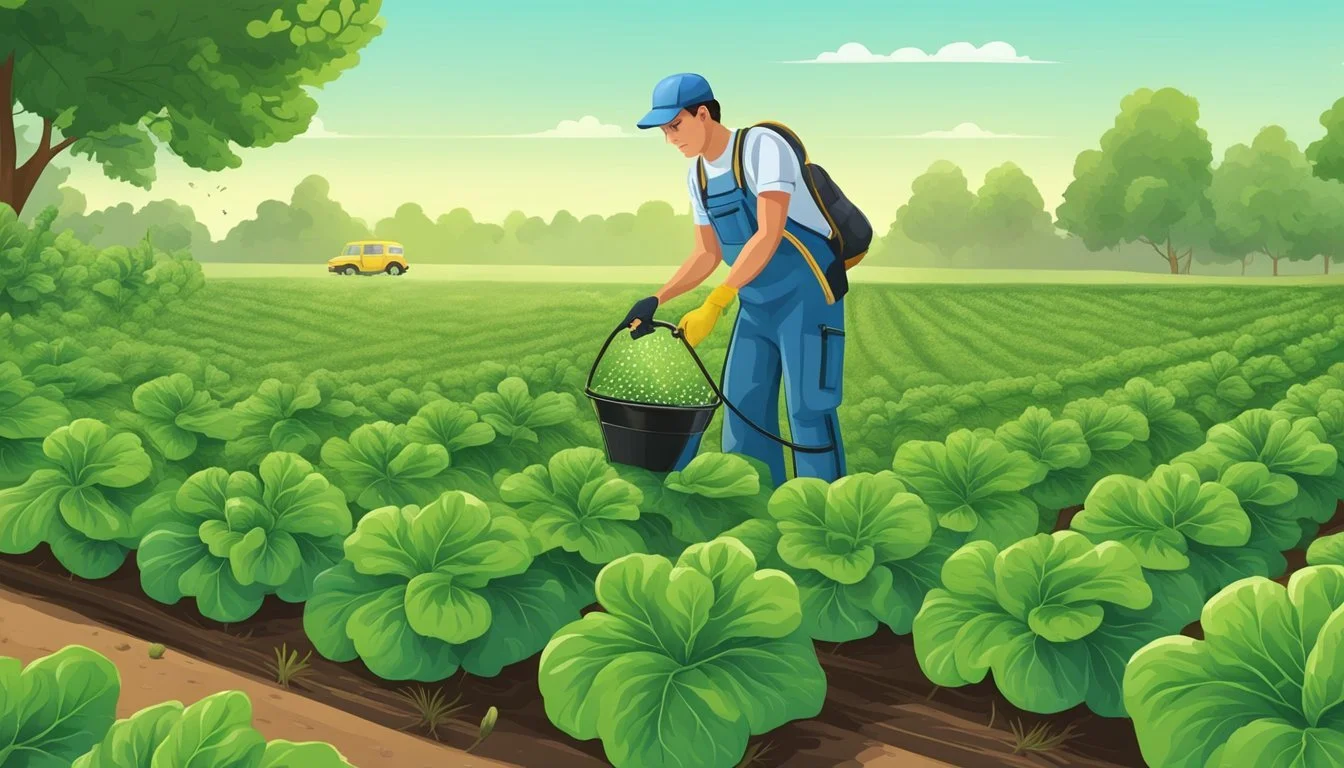Pest Control for Turnip Greens
Effective Strategies for Healthy Crops
Turnip greens are a nutritious leafy vegetable commonly grown both in home gardens and on commercial farms. As part of the Brassica family, which includes kale, cabbage, and broccoli, turnip greens offer an excellent source of vitamins A, C, and K, as well as calcium and fiber. They are not only valued for their nutritional benefits but also for the culinary versatility they provide. However, like many crops, turnip greens are susceptible to a variety of pests, which can impact both the yield and quality of the harvest.
Effective pest control is essential when growing turnips to ensure healthy, bountiful greens. Pests such as aphids, flea beetles, and cabbage worms can all pose significant threats to turnip crops. Addressing these challenges involves understanding the specific pests that target turnip greens and implementing management strategies to protect the plants. By utilizing integrated pest management techniques including cultural practices, biological control, and when necessary, chemical treatments, growers can mitigate the damage caused by these common pests.
The successful cultivation of turnip greens thereby significantly depends on the grower's ability to manage pests effectively. Considering the balance between protecting the crop and maintaining a safe, environmentally friendly approach to pest control is paramount. This not only contributes to the sustainable production of turnip greens but also preserves their nutritional benefits, making them a reliable part of a healthy diet.
Understanding Turnip Greens
Turnip greens are a versatile and nutritious plant, whose optimal growth depends on specific plant varieties, seasons, soil conditions, and care in terms of sunlight and nourishment.
Plant Varieties
There are multiple varieties of turnip greens, each with distinct characteristics. The 'Seven Top' is grown exclusively for its leaves, while 'Shogoin' is a popular choice for both root and greens.
Optimal Planting Seasons
They thrive best when planted in the spring or fall. Temperatures between 40-75°F are ideal, with the cooler weather of fall promoting tender, flavorful greens.
Soil Preparation and Requirements
The soil for turnip greens should be well-draining and rich in organic matter. Compost or aged manure can be incorporated to increase nutrient content. Maintain consistent moisture without waterlogging the soil.
Sunlight and Watering Needs
For optimum growth, turnip greens require full sun. However, they can tolerate light shade. Irrigation is necessary to keep the soil evenly moist, especially in dry conditions.
Nourishment and Fertilization
Turnip greens benefit from a balanced fertilizer rich in nutrients. Higher nitrogen levels encourage leafy growth. Apply fertilizer according to soil test recommendations and always water well after feeding to distribute the nutrients.
Pest Identification and Management
Effective pest management in turnip greens requires the identification of pests and understanding the variety of methods available for control. Knowing the pests, utilizing natural and chemical control options, implementing preventative strategies, and monitoring, are crucial to maintaining the health of turnip greens.
Common Pests and Insects
Turnip greens can fall prey to several pests, with common culprits including aphids, whiteflies, flea beetles, and caterpillars. These pests typically feed on the foliage, leaving behind distinctive damage like yellowing or circular holes. The undersides of leaves are common hiding spots for insects, necessitating a thorough check during inspection.
Natural Pest Control Methods
To tackle pest issues naturally, growers can employ beneficial insects such as ladybugs to prey on aphids and whiteflies. Neem oil and insecticidal soap are effective organic treatments that can help control pest populations without harming beneficial insects. Additionally, mulch can act as a physical barrier to inhibit the movement of pests. Companion planting with crops like garlic may deter certain insects from attacking turnip greens due to their pungent odor.
Chemical Pest Control Solutions
When natural methods are insufficient, chemical insecticides become necessary. It is critical to choose insecticides that are specifically labeled for use on turnip greens, applying them according to the manufacturer's guidelines to effectively target pests without causing undue harm to the ecosystem.
Preventative Strategies
Preventative measures such as crop rotation can reduce pest infestations by interrupting the life cycle of insects. Adequate irrigation practices minimize water stress on the plants, which can make them less vulnerable to pest attacks. Employing a thick layer of mulch helps retain soil moisture and suppress weeds that can harbor pests.
Monitoring and Responding to Pest Activity
Regular monitoring of turnip green crops is essential to catch pest infestations early. Visual inspection of the plant, especially the undersides of leaves, is key. Should yellowing or damage occur, it is important to identify the pest correctly and respond promptly with the most appropriate control method, be it natural, chemical, or a combination. Maintaining vigilance and reacting quickly to the first signs of pests can save a crop from significant damage.
By understanding the pests that target turnip greens and the range of management strategies, growers can effectively control unwanted insects and protect their crops.
Disease Prevention and Treatment
Effective management of pests in turnip greens involves recognizing the diseases affecting the crop, implementing cultural methods for disease reduction, utilizing fungicidal and bacterial controls, and identifying disease symptoms for prompt treatment.
Common Turnip Green Diseases
Turnip greens are susceptible to a range of diseases, with black rot, downy mildew, white spot, and white rust being prominent. Black rot is characterized by V-shaped yellow to brown lesions at the leaf margins, while downy mildew presents as yellow areas that become covered with a fuzzy, grayish mold. White spot and white rust result in white, deformed patches and pustules on the leaves, respectively.
Cultural Practices to Minimize Disease
To minimize the incidence of disease, turnip greens benefit from crop rotation and companion planting. Crop rotation prevents the buildup of soil-borne pathogens, and companion planting can enhance the overall health of turnips while deterring pests. It is also imperative to maintain proper fertilizing practices, avoiding the overuse of nitrogen-rich fertilizers which can increase the susceptibility of plants to diseases.
Fungicidal and Bacterial Control Measures
Fungicides and bacterial treatments play a crucial role in the management of turnip green diseases. Diatomaceous earth can be used against crawling insects that may spread diseases, while fungicides formulated to combat fungi and bacteria should be applied as per manufacturer's directions and safety guidelines. Frequent monitoring of crops will aid in the early detection and timely application of these treatments.
Recognizing and Treating Disease Symptoms
Early recognition of disease symptoms such as yellow, gray or v-shaped lesions, wilting, or deformed growth is vital for effective treatment. Once symptoms are identified, one should refer to agricultural extension services or reliable resources on diseases of turnips and rutabagas to decide the appropriate course of action, including the potential use of targeted fungicidal or bactericidal treatments.
Cultivation and Harvesting Techniques
Achieving a bountiful harvest of turnip greens involves meticulous attention to cultivation methods, adherence to harvesting timelines, and careful post-harvest handling. These steps are essential to ensure both the quality and longevity of the greens.
Proper Cultivation Practices
To cultivate turnip greens effectively, one must start with well-drained soil enriched with organic matter. The seeds should be sown at a depth of about ½ inch, spaced approximately 2 inches apart. Regular watering is crucial; however, ensuring the soil is moist without being waterlogged is essential for the prevention of root rot and other diseases. Effective weed control is integral to reduce competition for nutrients and water, with mulching being a common and productive method to suppress weed growth.
Timely Harvesting Guidelines
The timing of the harvest is key for turnip greens. It is recommended to harvest the greens when they reach the size of a medium leaf, which allows for multiple harvests as the turnip roots continue to grow. Greens should ideally be harvested in the morning when they are most hydrated. Consistent harvesting encourages new growth, providing a longer production period.
Post-Harvest Handling and Storage
Once harvested, turnip greens should be cooled immediately to preserve their freshness and extend their shelf life. It's best to store greens at high humidity levels around 95% to prevent wilting. Proper storage techniques also include keeping the greens in a cold environment, ideally just above 0°C, to maintain their quality before consumption or preservation. To ensure longevity, one can preserve greens by blanching and freezing, which can retain the nutritional value for extended periods.
Understanding Companion Plants
In the pursuit of a healthy turnip green garden, the strategic use of companion plants plays a crucial role. They can provide mutual benefits to turnips, such as pest control and improved growth, making them an essential element of organic gardening.
Effective Companion Planting Pairs
Onions: These bulbous plants serve as a deterrent for many pests that could harm turnip greens due to their strong scent.
Garlic: Similar to onions, garlic is effective in repelling certain pests and is considered a beneficial companion for turnip greens.
Mint: Mint is noted for its ability to repel flea beetles and aphids when planted near turnips, as identified in a guide on companion planting for turnips.
Kale: Turnips and kale are compatible and can thrive when planted in close proximity, supporting each other's growth.
These pairings are particularly advantageous, harnessing natural relationships between plants to foster a healthier garden environment.
Benefits of Companion Planting
Companion planting offers a range of benefits, of which natural pest control is a significant one, especially in organic turnip cultivation. Plants like onions and garlic emit substances that pests find unattractive, providing a safeguard for neighboring turnips as highlighted by Humble Garden Life. Moreover, companion planting contributes to a more versatile and nutritious garden ecosystem. For example, the inclusion of kale not only diversifies the garden but also adds a nutritious leafy green that can share the space efficiently with turnips. This method of planting is a time-tested technique that enhances the vitality of garden plants, ensuring their robust growth without relying on chemical interventions.
Sustainable Turnip Greens Farming
Sustainable turnip greens farming emphasizes techniques that maintain and improve soil health, conserve water, and leverage organic farming practices. Implementing these measures ensures long-term productivity and eco-friendly operations.
Importance of Organic Farming Practices
Organic farming practices are crucial in sustainable turnip greens cultivation. They rely on natural inputs like compost and beneficial insects to foster a balanced ecosystem. These practices reduce reliance on synthetic chemicals, benefiting both the environment and consumers. For instance, the introduction of predatory insects can naturally mitigate pest populations without harmful pesticides.
Water Conservation Approaches
Efficient irrigation systems are integral to water conservation in turnip greens farming. Drip or soaker hoses target the root zone, reducing evaporation and runoff. Additionally, using mulch retains soil moisture, which reduces the need for frequent watering. These techniques not only conserve water but also prevent soil erosion and nutrient leaching.
Soil Health and Crop Rotation
Healthy soil is the foundation of sustainable farming. The integration of crop rotation and regular addition of compost improves soil fertility and structure. Rotating turnip greens with other crops, such as legumes, can naturally replenish nitrogen levels in the soil. Continuous application of compost enhances soil organic matter, which is essential for nutrient retention and root development.
Frequently Asked Questions
In this section, discover various strategies and remedies for effectively managing pests that target turnip greens, ranging from homemade solutions to natural deterrents.
What are effective homemade pest control solutions for turnip greens?
Homemade pest control solutions include creating a spray from water mixed with a few drops of mild dish soap, which can deter many soft-bodied insects. Another option is a mixture of water and cayenne pepper, which can act as a repellent for a variety of pests.
What are some natural remedies to protect turnip greens from pests?
Natural remedies include the use of companion planting, such as growing herbs that can repel insects away from turnip greens. Trap crops are also beneficial; these are plants that are more attractive to pests than turnips and can lure them away.
How can neem oil be used to manage pests on turnip greens?
Neem oil, when diluted with water, can be used to create an effective foliar spray that disrupts the life cycle of pests without harming beneficial insects. Regular application can act as a deterrent and ensure pests remain at bay.
What techniques can DIY gardeners employ to safeguard turnip greens against pests?
DIY gardeners can install protective barriers such as floating row covers to physically shield their turnip greens from pests. They can also manually remove pests or introduce beneficial insects that feed on common pests.
How can you manage diseases affecting turnip greens in the garden?
Managing diseases in turnip greens involves practicing crop rotation, ensuring proper spacing for adequate air circulation, and applying fungicides or organic powders such as diatomaceous earth, which can prevent fungal spores and other pathogens from infecting plants.
What approaches are best for dealing with leaf damage from insects on turnip greens?
To handle leaf damage, identify the pest causing the issue, remove affected foliage, and apply appropriate organic or chemical treatments. Encouraging natural garden predators can provide long-term pest control by keeping pest populations low.






